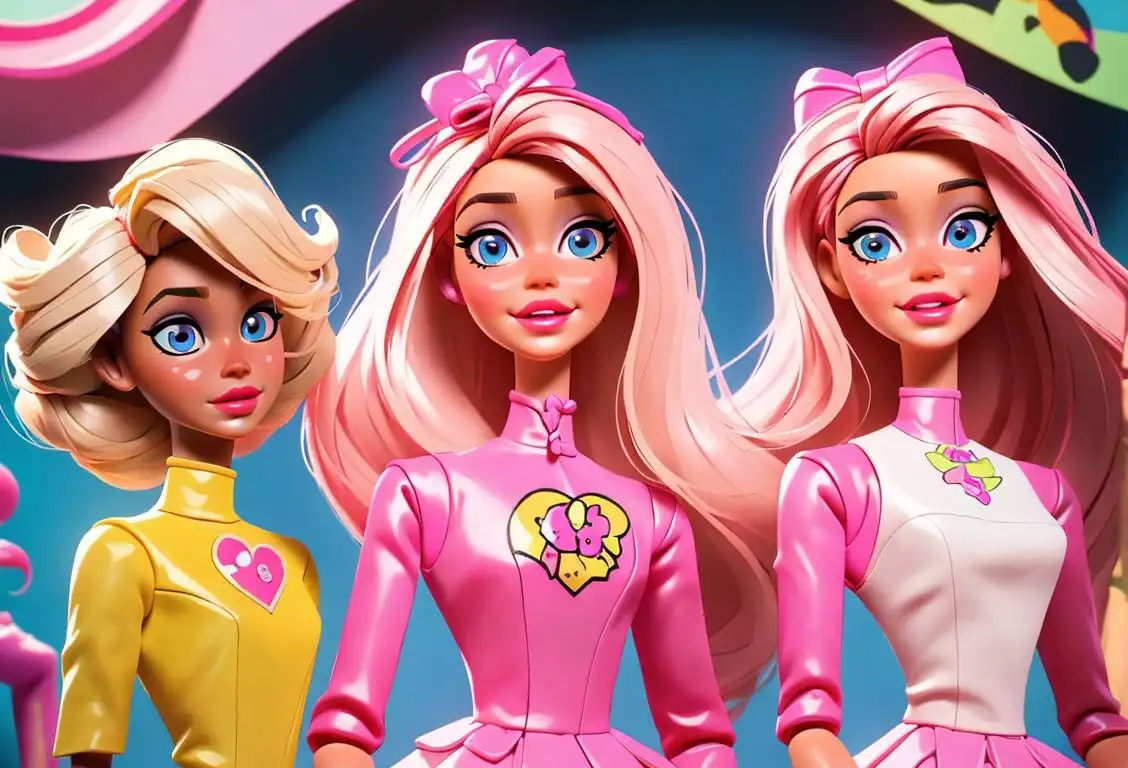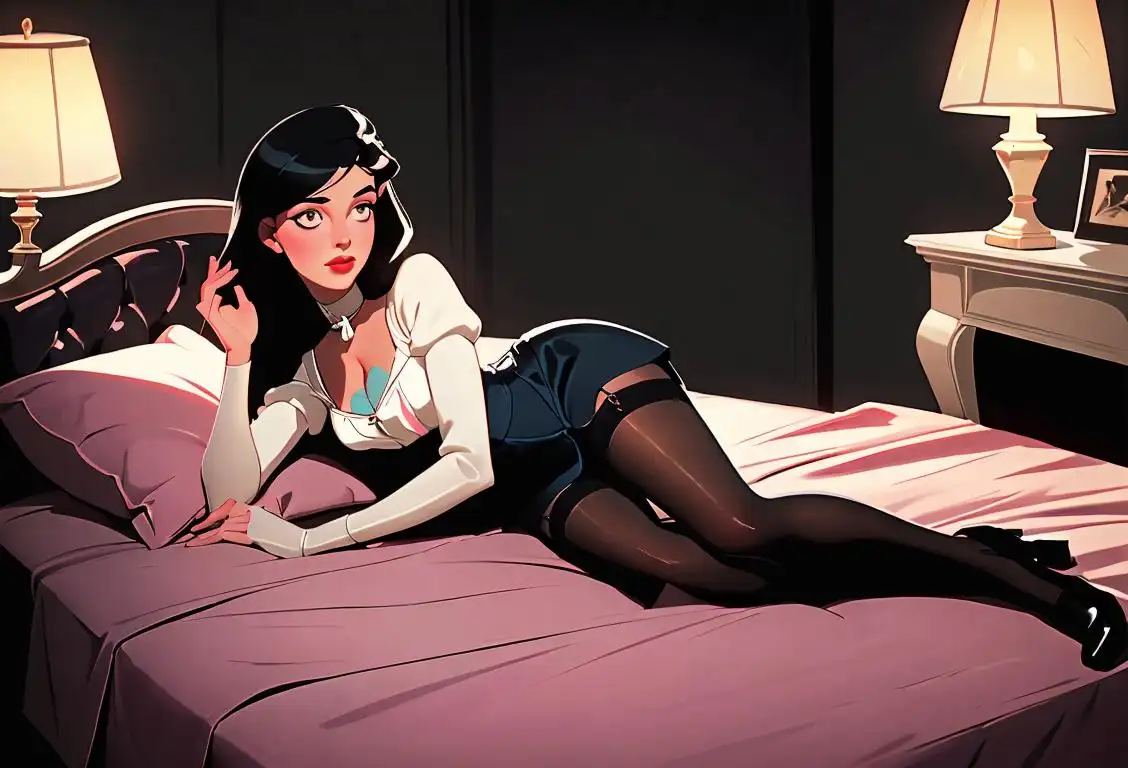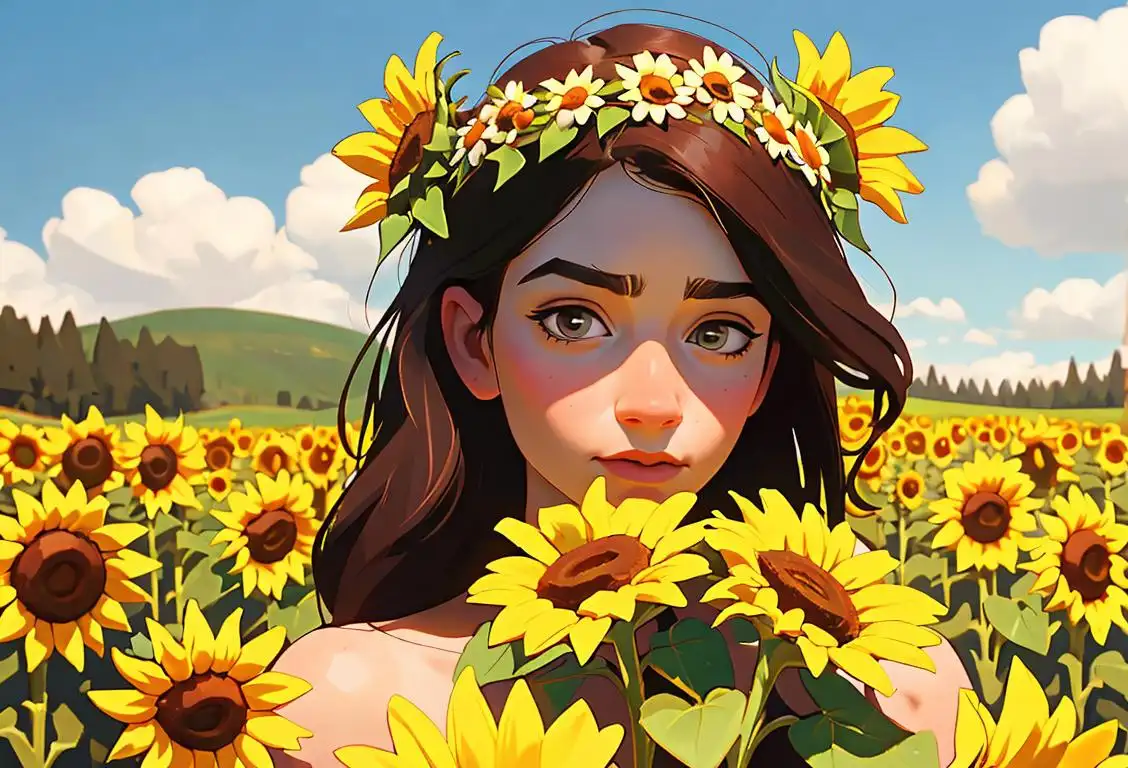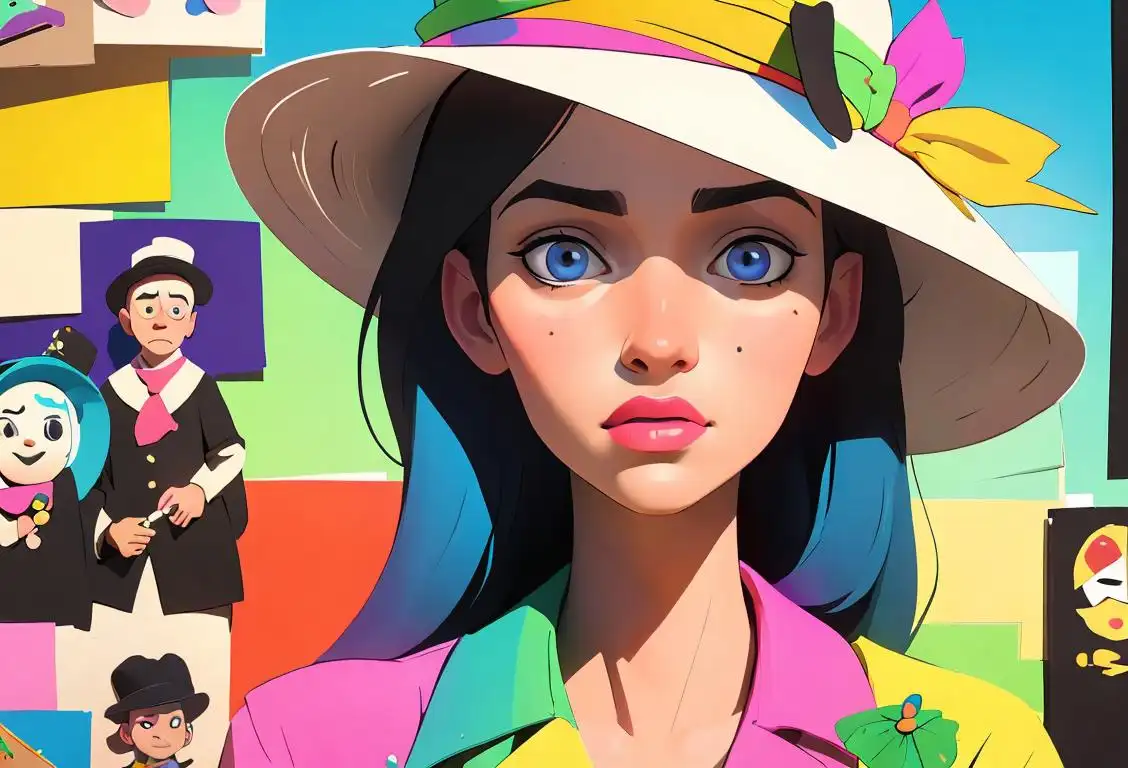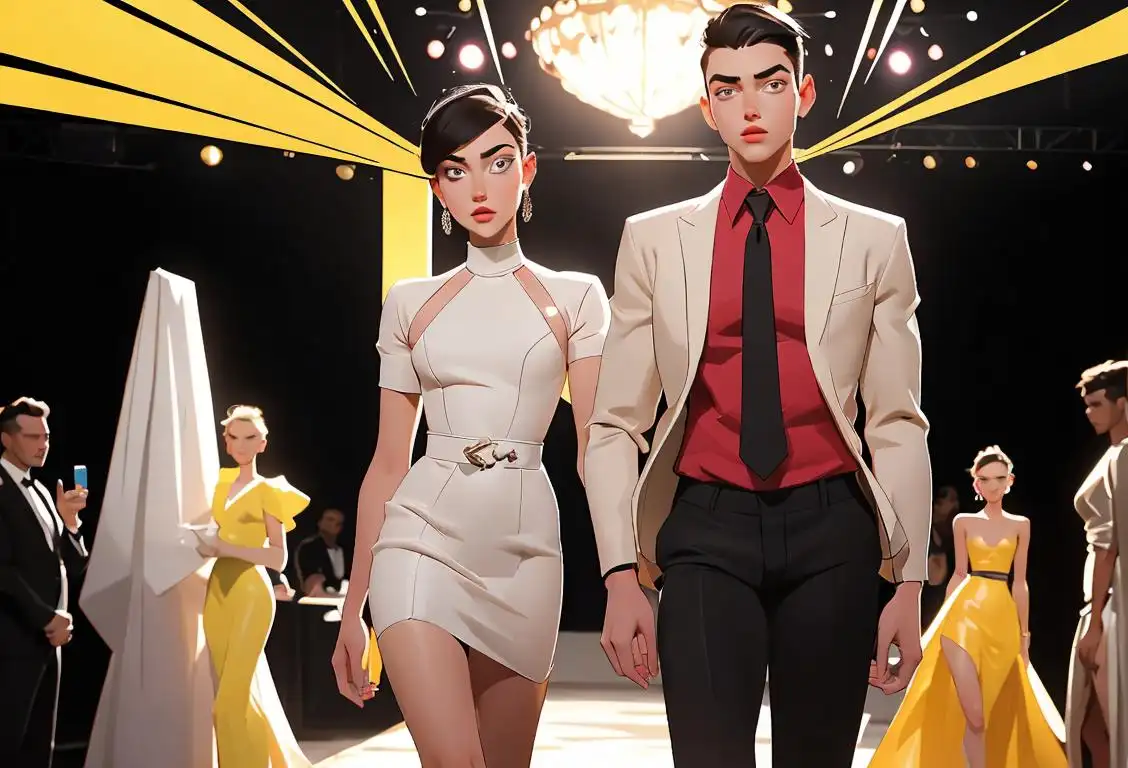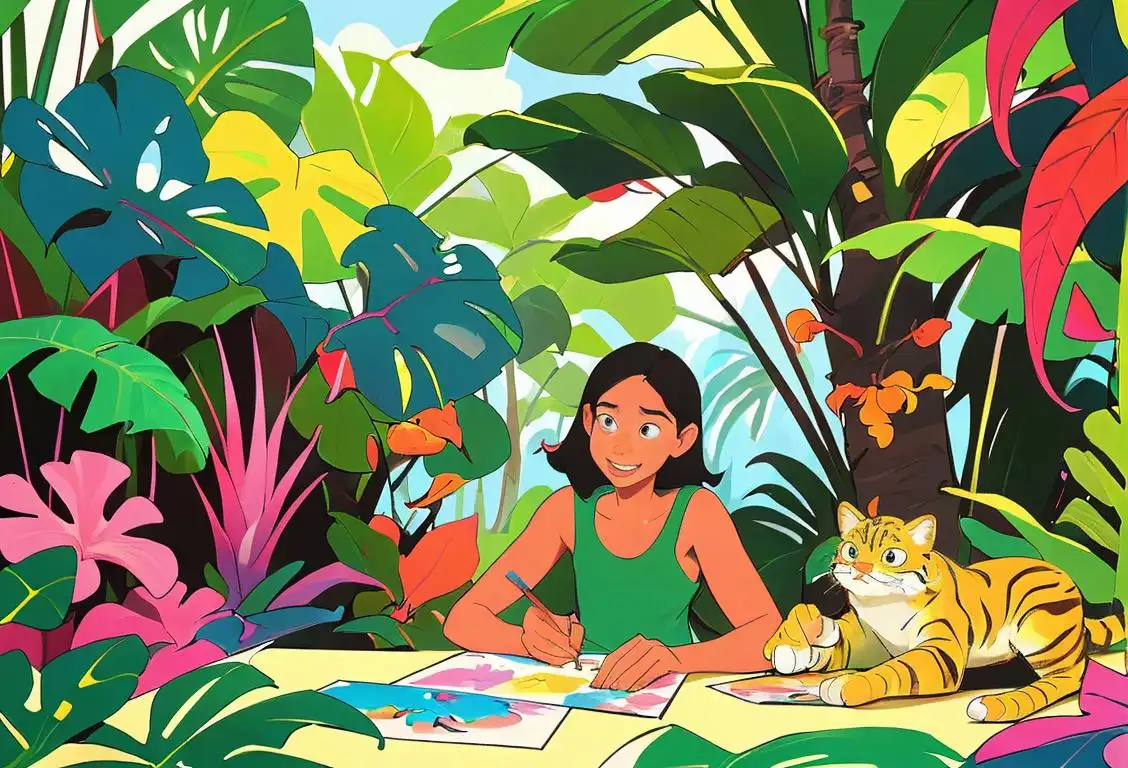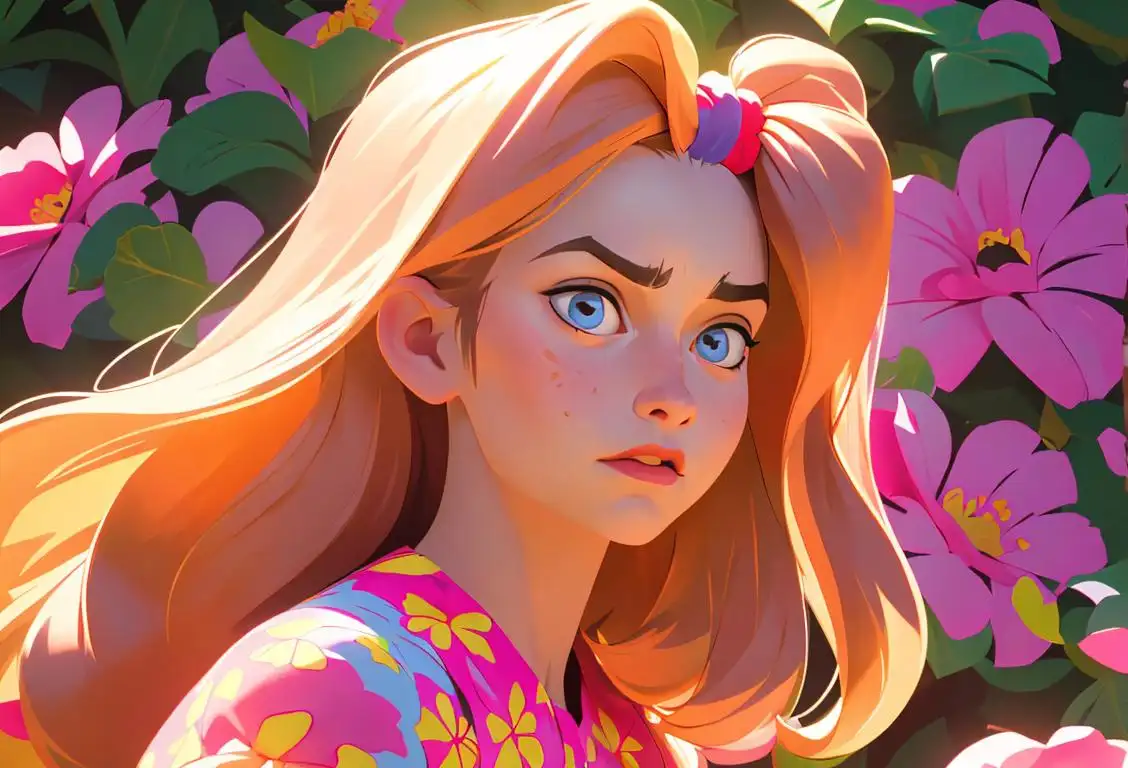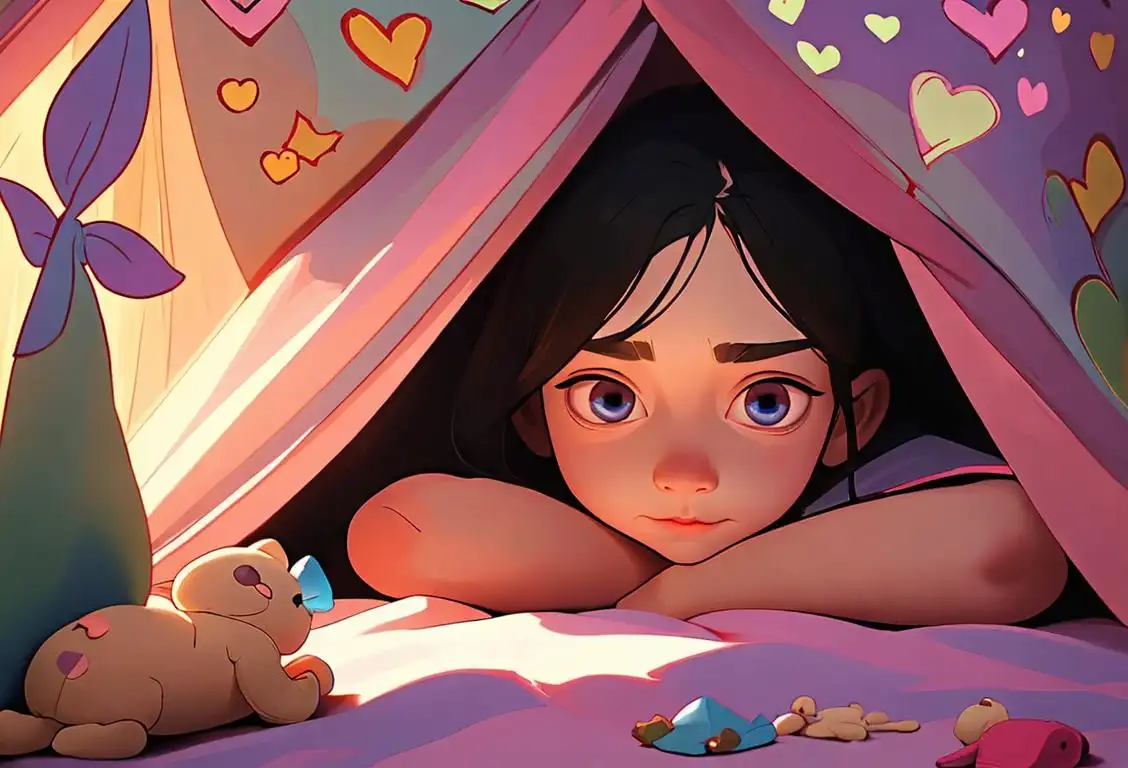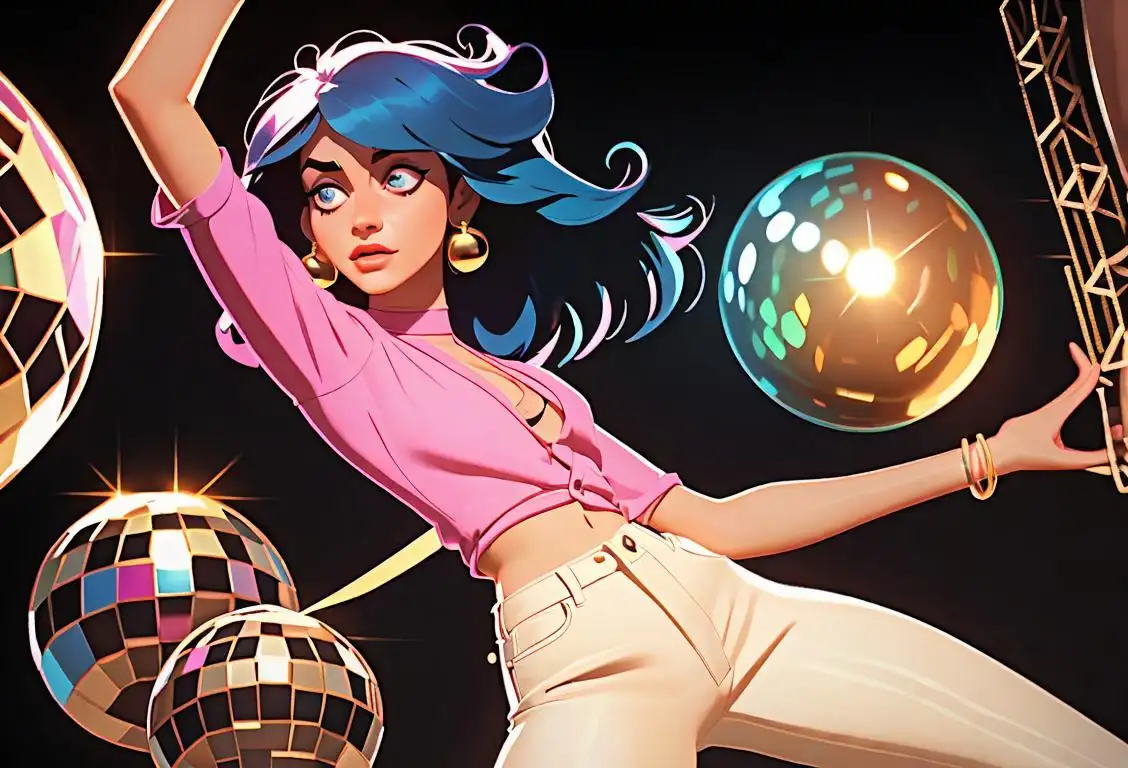National Tie Dye Day
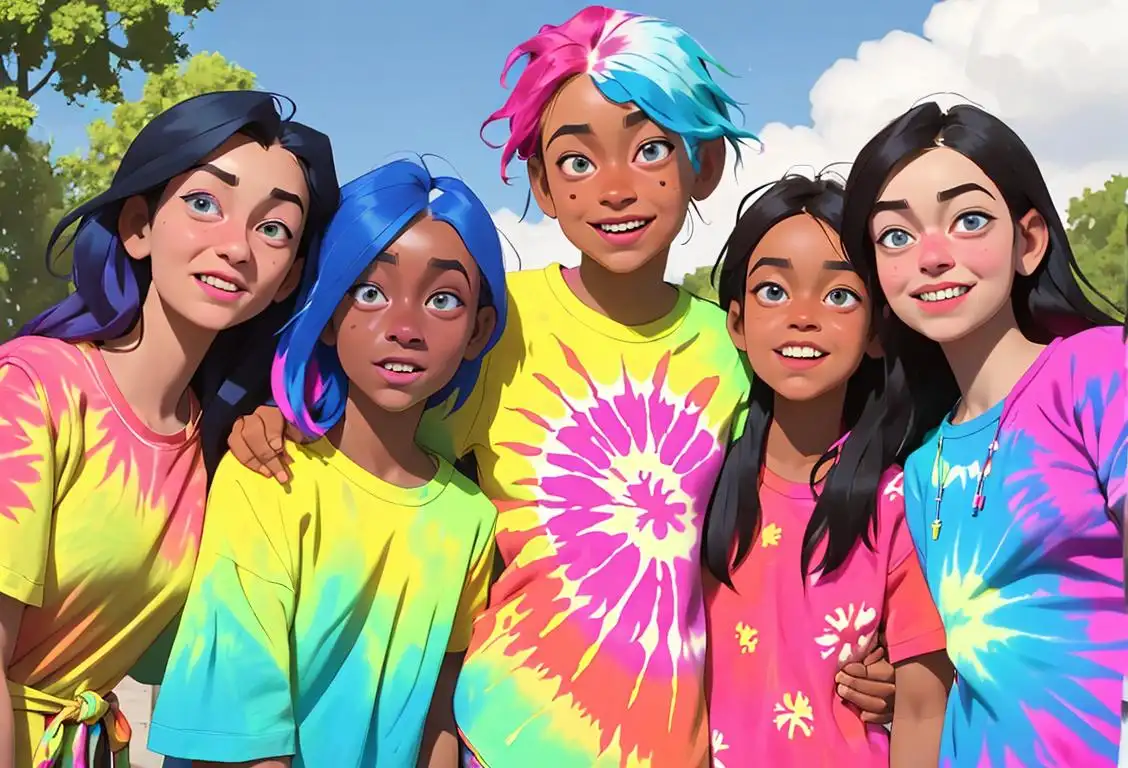
What happens when you take a white t-shirt, twist it up, throw on some brightly colored dyes, and let magic happen? If you guessed the creation of an amazing fashion statement from the 60s known as tie dye, then you're right! And guess what? There's a whole day dedicated to this groovy style, aptly named National Tie Dye Day.
When is Tie Dye Day?
It's national tie dye day on the 30th April.
A Colourful Splash in Time
National Tie Dye Day sheds light on a practice that has been popular for decades. The 'coolest' day of the year was noticed online as far back as 2016, with the internet buzzing with technicolor vibe on April 30th.
The Hippy Origins
Although tie dye became a pop culture icon during the late 1960s, its roots stretch much further back. The initial techniques were known as resist-dyeing, and the earliest examples are found from the 8th century in Asia and Africa. Fast forward to the 20th century, and the burst of color known as tie dye finds itself the poster child for the counter-culture and psychedelic movements.
Revival in Pop Culture
Today, tie dye has made its way back onto the runways, into high street stores and has even become an entertaining activity for the family, where everyone can whip up their own whirly-swirly creations. Whether you're a teenager or just young at heart, this day is a perfect way to break out those dyes and let the creativity reign supreme!
Celebrating National Tie Dye Day
So, how does one celebrate such a day? There are no hard and fast rules. Host a party, share your designs on social media, teach kids the joy of tie-dye or just wear your favorite tie dye shirt! Let's celebrate by filling our day, and wardrobe, with as much color as possible!
History behind the term 'Tie Dye'
1960s
Hippie Movement Embraces Tie Dye
During the 1960s, the vibrant and bold tie dye patterns became associated with the counterculture movement known as the hippies. The tie dye technique, which involves folding, twisting, and tying fabric before applying dye, perfectly reflected the peace, love, and nonconformity that the hippie movement stood for. This period marked the popularization of tie dye as a form of self-expression and a symbol of unity.
1960s
The Birth of Tie Dye
Tie dye first emerged in the 1960s as a vibrant and expressive form of clothing decoration. It gained popularity during the counterculture movement of the era, with its colorful and psychedelic designs becoming synonymous with the hippie culture. Tie dye was embraced as a visual representation of individuality and freedom, reflecting the anti-establishment sentiments of the time.
1960
Hippies Embrace Tie Dye
The term 'tie dye' originated in the 1960s when the hippie counterculture movement embraced this vibrant and unique fabric dyeing technique. Tie dye became synonymous with the spirit of peace, love, and individuality that defined the era. It was popularized by the iconic hippie fashion, featuring colorful patterns and psychedelic designs.
1970
The Hippie Movement
In the year 1970, tie dye became a popular term due to its association with the hippie movement. The hippie movement, characterized by its countercultural values and experimental fashion, embraced tie dye as a symbol of free-spiritedness and individuality. Tie dye clothing, often created using vibrant colors and unique patterns, became a prominent expression of the hippie culture.
1960s
The birth of tie dye
Tie dye, a vibrant and colorful fabric design technique, emerged in the 1960s as a symbol of counterculture and self-expression. Inspired by ancient resist-dyeing methods practiced in Asia and Africa, tie dye quickly gained popularity among the hippie movement in the United States. The technique involves folding, twisting, or crumpling fabric and then securing it with rubber bands or string before immersing it in dye, resulting in unique and eye-catching patterns.
1970s
Tie dye goes mainstream
In the 1970s, tie dye made its transition from a symbol of the counterculture to a mainstream fashion trend. With its bold and psychedelic patterns, tie dye became synonymous with the era of disco and free-spiritedness. It found its way onto everything from t-shirts and dresses to accessories and home decor. The vibrant and chaotic designs of tie dye perfectly captured the exuberance of the '70s.
1960s
Early Origins of Tie Dye
Although tie dye gained popularity in the 1970s, its origins can be traced back to the 1960s. The technique of tie dyeing fabric originated in ancient cultures such as India, Japan, and Africa. However, it wasn't until the 1960s that tie dye started to gain recognition in the Western world. Artists and crafters began experimenting with various dyeing techniques, including tie dye, as a way to create unique and psychedelic designs.
Ancient Times
Early Artistic Techniques
While tie dye may be most commonly associated with the 1960s, its roots can actually be traced back much further. Similar techniques were practiced in ancient times, with evidence of tied and dyed fabrics found in various cultures around the world. For example, in India, the ancient art of Bandhani involved tying fabric with threads before dyeing to create intricate patterns.
1964
Tie Dye Becomes a Widespread Art Form
By the mid-1960s, tie dye had gained significant popularity outside of the hippie culture. It became a widely recognized art form, with artists experimenting with various techniques and styles. Tie dye garments and textiles were not limited to clothing but also appeared on accessories, tapestries, and even home decor items. The artistry and creativity of tie dye continued to evolve and captivate people's imagination.
1970s
Tie Dye in Mainstream Fashion
In the 1970s, tie dye transcended its hippie roots and made its way into mainstream fashion. Designers recognized the appeal of tie dye's eye-catching and unique patterns, leading to its incorporation into clothing, accessories, and even household items. Tie dye became a staple of the disco era, with vibrant and psychedelic colors adorning everything from shirts and dresses to socks and scarves.
8th to 10th Century
Shibori in Japan
The Japanese art of Shibori, which dates back to the 8th to 10th century, also played a significant role in the development of tie dye. Shibori involves various fabric manipulation techniques such as folding, pleating, and tying to create intricate patterns. These patterns are then dyed, resulting in unique and beautiful designs. Shibori became highly influential and inspired tie dye techniques around the world.
1990s
Tie Dye Resurgence
After a lull in popularity, tie dye experienced a resurgence in the 1990s. This revival was largely driven by grunge and alternative fashion trends of the era. Tie dye once again became a symbol of rebellion and individuality, embraced by musicians, artists, and the youth culture of the time. The 1990s saw tie dye being used not only in clothing but also in accessories, home decor, and even hair dye.
1980s - Present
Tie dye persists, reinvents, and inspires
Despite the decline in popularity during the 1980s, tie dye never truly disappeared from the fashion scene. It had periodic comebacks in subsequent decades, often reinventing itself to align with contemporary styles. From the grunge fashion of the '90s to the bohemian revival of the 2000s and the current resurgence in DIY and sustainable fashion, tie dye continues to evolve and inspire creativity. It has also become a beloved symbol of nostalgia, representing the carefree and rebellious spirit of the past.
1966
Rit Dye Introduces Tie Dyeing Kits
In 1966, the company Rit Dye introduced tie dyeing kits to the market, making the process more accessible to the general public. These kits included instructions and dye colors, allowing individuals to easily create vibrant tie dye patterns on their own clothing. The availability of these kits contributed to the popularization of tie dyeing as a form of self-expression.
1970
Tie Dye in Popular Culture
In the 1970s, tie dye made its way into popular culture through the music and fashion industries. It became closely associated with the bohemian and free-spirited lifestyle. Tie dye was not only worn by musicians and celebrities, but it also featured prominently in album covers, music videos, and live performances. The colorful and expressive nature of tie dye resonated with the cultural shift happening at the time.
1990
Tie Dye Revival
In the 1990s, tie dye experienced a revival and once again became a fashionable trend. It became a symbol of nostalgia for the psychedelic '60s and the spirit of rebellion. Tie dye patterns were incorporated into mainstream fashion, with designers and brands reinventing the technique in contemporary ways. Tie dye garments were no longer limited to casual wear but found their way into upscale fashion shows and runways, solidifying tie dye's enduring legacy.
1910s
The Influence of Batik
Another important influence on tie dye was the traditional Indonesian art of batik. Batik involves the application of wax to fabric, creating a resist before dyeing. This technique allows for precise control over the dyeing process, resulting in intricate and detailed patterns. The popularity of batik in the early 20th century introduced people to the concept of using fabric as a canvas for artistic expression, which in turn influenced tie dye.
Present
Tie Dye as a Fashion Staple
In the present day, tie dye continues to maintain its popularity and relevance in the fashion world. It has become a timeless trend, reinterpreted by designers and incorporated into various styles and aesthetics. Tie dye is not only seen in casual streetwear, but it has also made appearances on high-end runways, bridging the gap between fashion and art. From celebrities to everyday individuals, tie dye remains a go-to choice for those seeking vibrant and expressive fashion statements.
1969
Woodstock Music Festival
The year 1969 marked a significant moment in tie dye history with the Woodstock Music Festival. This iconic event brought together hundreds of thousands of people, many of whom wore tie dye clothing as a symbol of peace, love, and unity. Woodstock became a cultural touchstone and helped solidify tie dye as a fashion statement associated with a spirit of rebellion and nonconformity.
1980s and Beyond
Tie Dye as a Fashion Trend
After its initial peak in popularity during the 1970s, tie dye remained a prominent fashion trend throughout the 1980s and beyond. It became particularly popular in the Grateful Dead and jam band culture, where tie dye shirts became a staple merchandise item. In recent years, tie dye has experienced a resurgence in mainstream fashion, making appearances on runways and in major retail stores, proving that this colorful technique continues to captivate the fashion world.
1960s
Tie Dye Goes Mainstream
During the 1960s, tie dye gained widespread popularity through prominent cultural icons such as rock bands, artists, and fashion designers who showcased tie dye in their work. The vibrant and eye-catching designs became fashionable and made their way into mainstream fashion. Tie dye became not just a symbol of the counterculture but a fashion statement that transcended societal boundaries, capturing the spirit of the era.
Did you know?
Did you know that tie-dye dates back as far as 500AD? It was first discovered in Peru!Tagged
fun Fun nostalgia creativity fashion tie-dye Hobby Fashion Family activities Creativity Home entertainmentFirst identified
30th April 2016Most mentioned on
30th April 2016Total mentions
4Other days
Tie Dye Day
Barbie Doll Day
Nylon Stockings Day
Flower Crown Day
Make A Hat Day
Model Day
Coloring Book Day
Scrunchie Day
Blanket Fort Day
Bell Bottoms Day
